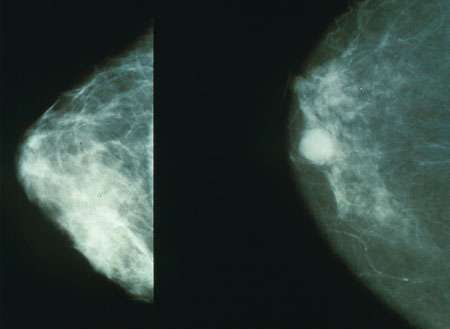City of Hope, a world-renowned cancer research and treatment center, has identified how cancer cells in patients with early-stage breast cancer change and become resistant to hormone or combination therapies, according to a new study published in Nature Cancer.
About 80% of breast cancer cases are hormone receptor positive, meaning that these cancer cells need estrogen or progesterone to grow, according to the American Cancer Society. Doctors currently treat people with estrogen receptor positive (ER+) breast cancer using therapy that inhibits both estrogen levels and cell cycle activity. While these therapies often initially shrink tumors, about 90% of metastatic patients and 50% of Stage 2 and 3 breast cancer patients develop resistance.
A research team led by Andrea Bild, Ph.D., a professor in City of Hope’s Department of Medical Oncology & Therapeutics Research, used single-cell RNA sequencing to identify resistant traits cancer cells acquire; these cancer cells are able to persist despite therapy. The team also identified when these resistant traits are acquired and found them as early as two weeks after the start of a treatment regimen, which is months faster than current methods used to measure treatment response.
“If health care providers are able to identify the development of tumor resistance earlier, then they can quickly switch gears and offer a different treatment regimen that could eventually bring the breast cancer patient into remission rather than continuing on a path that may fail to achieve a positive outcome,” Bild said. “With the current available set of precision medicine tools, medical professionals could measure patient response to treatment earlier to offer treatment options that are more likely to work for each individual patient.”
Bild and her colleagues studied the evolution of the DNA and RNA in breast tumor cells of postmenopausal women with ER+ breast cancer who were enrolled in the FELINE trial. These patients were treated with endocrine therapy (letrozole) alone and in combination with cyclin-dependent kinase (CDK) inhibitor therapy (ribociclib), a treatment that restrains tumor cells from growing. Patients were treated with targeted therapy in a neoadjuvant setting, meaning prior to surgery to remove the tumor, to assess response. Biopsies from over 40 patients’ tumors were processed and analyzed from cells taken prior to, two weeks after and six months from the start of endocrine and combination treatments.
City of Hope researchers found that resistant cells that persist even after endocrine and cell cycle (CDK4/6) inhibition therapy tend to shift their growth engine from using estrogen signaling to using alternative growth factor receptors and to rewiring cell cycle pathways. For example, resistant cells bypass the blocked pathways by turning on alternative signaling pathways such as growth receptors and MAPK signaling; this rewiring enables cancer cells to continue growing despite the estrogen and cell cycle drug inhibitors. Targeting these acquired resistance pathways with appropriate therapies may help doctors in the future treat patients with resistant ER+ early-stage breast cancer.
“The study is impressive in its scope, presenting comprehensive genomic profiling of the longitudinal samples from multiple patients,” said Suwon Kim, Ph.D., who was not involved in the research and is an associate professor at Translational Genomics Research Institute (TGen), an affiliate of City of Hope, and a faculty member of the University of Arizona College of Medicine. “The results are significant, revealing the emergence of the alternate specific pathways in single tumor cells as they become resistant to CDK inhibitors and endocrine therapy. The study findings offer opportunities for evidence-guided therapeutic intervention for therapy-resistant breast cancer.”
Understanding how tumor cells quickly change and rewire signaling pathways so that they can persist after combination neoadjuvant cancer treatment will enable scientists to design novel treatment regimens that target tumor resistance. Bild and colleagues are now identifying drugs that block the traits found specifically in resistant cancer cells.
“Early-stage ER+ and PR+ (progesterone receptor positive) breast cancer is often curable, and we need to continue down this line of research to design therapy strategies that provide a positive patient outcome that lasts,” Bild said. “I recommend that when possible, clinicians continue to collect tumor biopsies so we can measure cancer cell responses during treatment to understand how the patient’s tumors are responding. In addition, we need to look at RNA changes and not just DNA modifications, as these changes may more broadly capture resistance mechanisms.”
She added, “I am grateful to patients who participate in clinical trials so that scientists can continue to find better ways to treat this disease.”
Targeting drug-resistant breast cancer with estrogen
More information:
Jason I. Griffiths et al, Serial single-cell genomics reveals convergent subclonal evolution of resistance as patients with early-stage breast cancer progress on endocrine plus CDK4/6 therapy, Nature Cancer (2021). DOI: 10.1038/s43018-021-00215-7
Provided by
City of Hope National Medical Center
Citation:
Researchers identify how most common breast cancer becomes resistant to treatment (2021, June 24)
retrieved 24 June 2021
from https://medicalxpress.com/news/2021-06-common-breast-cancer-resistant-treatment.html
This document is subject to copyright. Apart from any fair dealing for the purpose of private study or research, no
part may be reproduced without the written permission. The content is provided for information purposes only.



